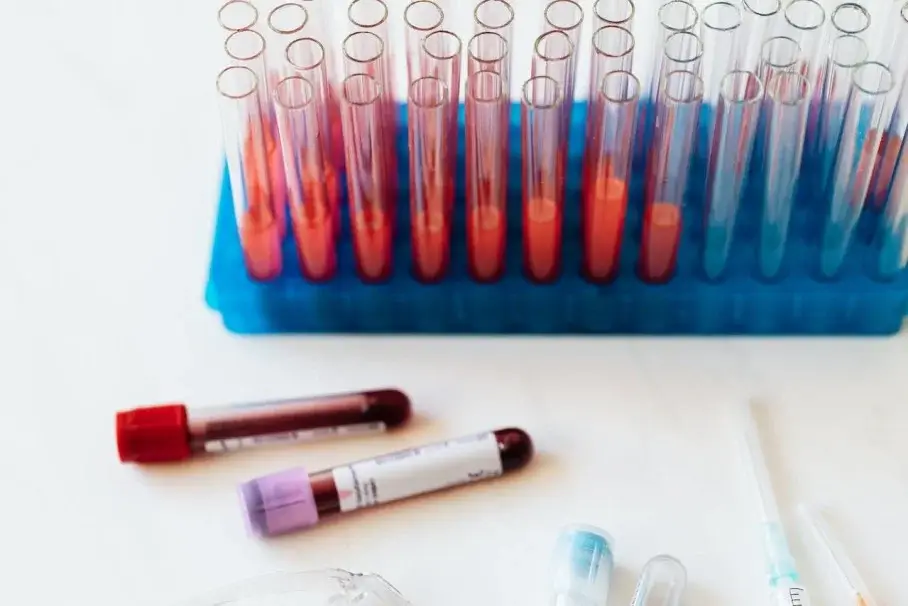Preventive Healthcare
SHBG Test: Purpose, & Implications

Table of Contents
Understanding health conditions and diagnostic tests can be overwhelming, especially when exploring the nuances of Sex Hormone Binding Globulin (SHBG).
Through this test, healthcare professionals assess SHBG levels, providing crucial insights into conditions like testosterone deficiency or excess, thus helping in the management of numerous health issues.
Understanding the role of SHBG and its implications on your health can sometimes be a daunting task. Therefore, having a deeper understanding of the SHBG test could help in comprehending and managing various hormonal conditions effectively.
What is an SHBG blood test?
Sex hormone-binding globulin (SHBG) is a protein produced by the liver that plays a vital role in the transport and regulation of sex hormones, primarily testosterone and oestrogen. The SHBG blood test measures the level of this protein in the bloodstream and compares it to the SHBG normal range.
SHBG is crucial in modulating the bioavailability of sex hormones. When these hormones are bound to SHBG, they're less available to tissues and cells, impacting their physiological effects. High levels of SHBG may result in reduced availability of free testosterone or oestrogen, potentially leading to symptoms associated with hormone imbalances.
SHBG test is often used in various medical contexts:
-
Assessment of Hormone Imbalances: SHBG levels can provide insights into conditions related to hormonal imbalances, such as polycystic ovary syndrome (PCOS), hypogonadism, or hirsutism, aiding in diagnosis and treatment planning.
-
Evaluation of Androgen-related Disorders: In conditions like hyperthyroidism or liver disease, SHBG levels might be affected, influencing the total levels of bound sex hormones.
-
Monitoring Hormone Replacement Therapy: In transgender individuals undergoing hormone replacement therapy (HRT), monitoring SHBG levels can help in determining treatment efficacy and dosage adjustments.
Interpreting SHBG levels requires consideration of other hormone levels, clinical symptoms, and individual health circumstances for a comprehensive assessment. Understanding SHBG's role in hormone regulation is pivotal for diagnosing and managing various conditions related to sex hormone imbalances.
What is it used for?
Sex Hormone-binding Globulin (SHBG) plays a crucial role in regulating the bioavailability of sex hormones, primarily testosterone and oestrogen. The SHBG test measures the level of this protein in the blood, offering insights into hormonal balance and various health conditions.
-
Diagnosing Hormone-related Conditions: Elevated or reduced SHBG levels can indicate hormonal imbalances. High levels of SHBG lead to reduced availability of free testosterone or oestrogen, potentially contributing to high SHBG symptoms such as infertility, irregular menstrual cycles, or androgen excess.
-
Understanding Endocrine Disorders: Assessing SHBG levels is pivotal in evaluating conditions like polycystic ovary syndrome (PCOS), hypogonadism, hirsutism, or hyperthyroidism. These conditions often affect SHBG levels and subsequently impact the total availability of bound sex hormones in the body.
-
Monitoring Hormone Therapy: SHBG testing is crucial in monitoring hormone replacement therapy (HRT) in transgender individuals or menopausal women. Evaluating SHBG levels helps in adjusting treatment regimens and ensuring the appropriate dosage of hormones.
Why do I need an SHBG blood test?
An SHBG blood test is typically used to assess various hormonal conditions in both men and women. It aids in evaluating hormone imbalances associated with testosterone and oestrogen. For men, the SHBG test can help diagnose low testosterone levels. In women, it may assist in identifying conditions related to excess testosterone.
Additionally, monitoring SHBG levels is important for understanding hormonal imbalances such as polycystic ovary syndrome (PCOS) or hirsutism. Evaluating SHBG levels provides insights into hormone-related disorders, guiding the diagnosis and management of various conditions affecting hormone regulation.
What happens during an SHBG blood test?
During an SHBG blood test, a healthcare professional will draw blood from a vein, typically in the arm. The blood sample is then sent to a laboratory for analysis. The test measures the concentration of sex hormone-binding globulin (SHBG) in the blood. SHBG is a protein that binds to sex hormones like testosterone and oestrogen, regulating their bioavailability in the body.
SHBG blood test involves minimal discomfort, similar to other standard blood tests, which may include a momentary pinch when the needle is inserted. Results are typically available within a few days. The findings help assess hormone levels and any potential imbalances, guiding the diagnosis and treatment of conditions related to sex hormone irregularities such as low testosterone in men or conditions related to excess testosterone in women.
Are there any risks to the test?
The SHBG blood test is a standard blood draw with minimal risks. experience mild discomfort or a pricking sensation when blood is drawn, and slight bleeding may occur at the puncture site. Serious side effects are rare but could include allergic reactions or, uncommonly, conditions like itching, hives, or muscle and joint pain.
What do the results mean?
Sex Hormone-Binding Globulin (SHBG) test results measure the quantity of SHBG in the bloodstream, offering insight into hormone levels. High SHBG levels generally signify reduced free sex hormone amounts, while SHBG levels in females indicate increased available sex hormones.
High SHBG levels might lead to symptoms associated with low sex hormone levels, such as decreased libido, reduced energy, and in men, potential erectile dysfunction. This condition may also contribute to hormonal imbalances in females, causing irregular menstrual cycles or other menstrual disturbances. It can also impact hormone therapy efficacy or play a role in issues related to infertility.
Low SHBG levels might indicate excess free sex hormones, leading to symptoms like excessive body hair growth in women, acne, or in men, symptoms of increased androgens. Low SHBG may also be associated with conditions like polycystic ovary syndrome (PCOS) in females and could indicate a need for evaluation and potential treatment to manage the underlying hormonal imbalances or associated health issues. Physicians interpret SHBG levels in the context of the individual's symptoms and other laboratory test results to guide diagnosis and treatment plans.
How to Increase SHBG?
To increase Sex Hormone-binding Globulin (SHBG), engage in regular exercise, as studies have shown it to be an effective method.
How to lower SBHG?
To lower SHBG, consider dietary changes such as replacing simple carbs with complex carbs, eating cruciferous vegetables, regularly exercising, and using supplements like inositol, spearmint, liquorice, and white peony.
Conclusion
The SHBG blood test is a standard procedure involving minimal risks and is essential for assessing hormonal imbalances. The results helps in diagnosing conditions related to hormone irregularities in both men and women, guiding appropriate treatments.
Metropolis Labs, specialising in comprehensive pathology services, including blood testing, offers accurate and efficient blood testing services. With a team of skilled technicians for at-home sample collection Metropolis Labs ensures precise and reliable results, enabling individuals to manage their health effectively. These tests, along with advanced technology for result dissemination via email and our user-friendly TruHealth app, make Metropolis a trusted name when it comes to medical testing.

























